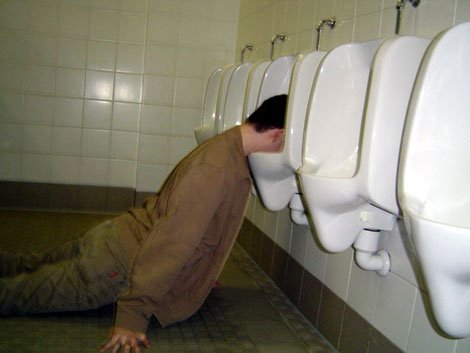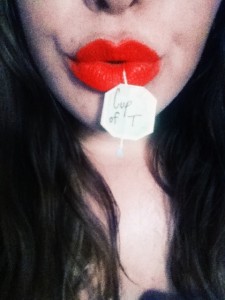Blackout City
What really happens to our brains when we get blackout drunk

It is hard to determine where the night starts and ends after a blackout. It all seems to mush together and fog into one big blur after countless cocktails and several shots. Your mind steps away from the bar leaving your empty body to pick up the tab in hopes of reuniting at home later that night. The only problem is there is a good chance it won’t be the same home, and the mattress you’ve chosen to sleep on looks a lot like a questionably damp shower rug in a stranger’s bathroom.
We’ve all been there, right? though it is not exactly certain where “there” is yet? It hurts to swallow or blink, and for whatever reason, your voice is incapable of producing anything other than a groan to escape your blistered lungs.
The stale smell of Marlboro on your fingers poke at your bruised memory, and for a brief moment, you are back at the first bar. One shot, one chug, and yes, (why, yes) you did accept that mystery drink from the guy who spilled his beer down your shirt. The out-of- body flashbacks from before you blacked out, before everything went blank, are all rushing back and it is hard not to cringe.
It’s coming. The spinning, the questions, and some vile substance working its way back up your dry throat.
By the end of high school, we have endured multiple speeches on the dangers of drinking and know from the gym teacher in Mean Girls that alcohol will make you fat, lead to AIDS, pregnancy, and finally, your imminent death. And while those assumptions may be pretty heavy a blame on a night out, studies have shown that collegiate binge drinking has been taken to a new level.
When we binge drink and blackout (and do who knows what in between our gaping windows of consciousness), it can have severe long term effects. Your avatar body, conveniently disguised in your clothes, has drunkenly insulted your peers, flashed the cabby, and shaken your psychological stability along with your overall cerebral balance.
The best part about all of this is that, come morning, the real you is left to clean up the mess and apologize for all the “fun” your avatar had without you last night.
According to Dr. Aaron White, blacking out from “ridiculous amounts” of alcohol, dehydrates and damages two major parts of our brain: the Hippocampus and the Amygdala, located in our frontal lobes.
“If alcohol hadn’t existed before now, there is no way it would be legalized today,” said the Ph.D who serves as program director at the National Institute of Alcohol Abuse. “There are no other drugs out there that produce amnesia.”
White that explained that amnesia, along with the list of painful side effects (nausea, headaches, and embarrassing moments recorded on Instagram) are the reason why alcohol, had it been introduced today, would be categorized as a schedule one drug.
Schedule one drugs are familiar names we may recognize from COPS but are less likely the substance passed along in a dorm room switcharoo. Drugs like heroine, LSD, methamphetamine, ecstasy, peyote, and the ever debatable Mary Jane, stand as the current narcotics in schedule one. Ironically, these drugs, along with the hypothetical addition of alcohol, are not only listed based not on their effects, but on the high potential of abuse.
This group of elite “helpers” are commonly referred to as the “most dangerous” of all drugs, with potential psychological and physical dependencies. Yet, here we are again, doing keg stands and scrolling through frightening phone pictures our avatar left behind for the second weekend in a row.
As adults, life is made of up of tiny black and white moments – clear yes or no situations. But the four years spent in college lie within a foggy gray area that allows us to come to class hung over every once in a while, shrugging and living on maybes. That is expected, as some students feel they are entitled to a bit of adolescent stupidity that can be blamed on free shots.
In 2011, a survey indicated that 43 percent of males and 32 percent of females crossed the binge threshold in a given two-week period. This is quite an achievement considering the survey was taken by a written questionnaire compromised of nearly 50,000 8th, 10th, and 12th grade overachievers.
Clearly, binge drinking is no new trend. It has been a trend our parents have most likely lived through and is a trend our children will probably dabble in, assuming there isn’t a new bizarre way to accomplish a Friday night buzz by then. However, constant as this reckless binging may be, national studies show that this deadly trend stumbles through fluctuation stages.
Years earlier, Yale’s landmark report (1953) drawn from survey data from more than 15,000 students on 27 college campuses, 80 percent of males and 49 percent of females reported having been drunk at some point. It’s as if an imaginary funnel comes enclosed with a campus brochure and lives on like some cherished alma mater.
“Nowadays, students are going to extremes and waking up in hospital because it is so stubbornly embedded in the college culture,” shared White.
Some students roll their eyes at White’s statistics and staggering percentages that pose more than one reason to slow our alcohol intake. We know the dangers. We know the consequences. Yet we’d rather deal with them the following morning. But what actually happening to our body during a blackout?
If the lights are on and no one is home, what then allows our avatar to function on autopilot?
We are familiar with the obvious definition of waking up and not knowing where we are or what we did, but blacking out is actually divided into two form; fragmentary and “en bloc.”
Fragmentary blackouts are missing chunks in between your night that Dr. White referred to as “islands of memories.” This form of blacking out obviously remains unhealthy, but is often irreversible once reminded of an event. Of course, some events are better off forgotten, (like your decision to drunk dial an ex) that will come back to bit you in the morning.
Worse than that embarrassment, an en bloc promises complete darkness. White allows a sarcastic laugh and describes this form as “film on the cutting room floor. It is as if someone has edited out entire parts of your life that you can’t get back or account for.”
Though, binge drinking is a threat to a properly functioning brain, it solely effects one lobe of the brain. This is why a person experiencing a blackout can still wander through basic functions such as walking, talking, and drinking more. Those parts of the brain remain productive and allow mobility without awareness.

Human brains have highly developed frontal lobes. Unless of course Saturday night was spent chasing tequila shots with whiskey and accepting the phone numbers from strangers you know you’d never talk to again. Then, your frontal lobe may equate to that of a sea sponge saturated in vodka.
The frontal lobe of the brain is where free will lives. Here, your brain allows you to make decisions; store memory, assesses impulse control along with emotional behavior. Ultimately, the front lobe is what decides whether we choose to stick to our diet or cheat on our partners.
Sadly, in the midst of happy hour our inhibitions are lowered along with our ability to make good decisions; bringing us back to reality on the bathroom floor.

White abandons his doctoral professionalism for a moment and reminisces on one of his own college experiences. “I had this friend in school that would always pick fights with guys much bigger than he was, which as his friend often pulled me into the awkward situation with him.”
White laughs and asks. “What was I supposed to do now that he had picked the biggest guy in the place?”
While your body walks on, the mind is unaware that this incident occurs in a series of steps. The amygdale, which serves as the frontal lobes smoke alarm, alerts the brain of danger or the feeling of fear, which after drink four seems to be very little and the tattooed dude in the corner seems like an easy opponent.
Step one. Or rather, misstep one.
The scene moves to the parking lot, now all consciousness has left and your avatar is now struggling to fight the battle alcohol told you could be won. Only you can’t. You didn’t, and now your avatar body is bragging to stranger about its new black eye.
Misstep two.
Lastly, misstep three can be found at the bottom of a toilet bowl searching your hippocampus for memories. This part of the brain is responsible for retaining memory and our navigational abilities, which now consist of two places; the toilet and the floor.
White later shared that it is not so much the alcohol that we drink, but the ways in which we drink it. And yes, there is a right way. Because really, how much fun is a night you can’t remember?
Though, large amounts of concentrated alcohol also serve as a risk factor, blackouts are often caused by drinking too fast or on an empty stomach.
“Based on my own research, most college students are unaware of what a proper serving actually looks like,” White claimed. “This of course is determined by who is pouring the drink. Studies have shown that a male pouring a drink for another male will match the size of their own drink. However, when pouring a drink for a woman the cup level is heightened.”
For some reason, this fact lacked shock value as it could be viewed one of two ways; as a sign of generosity or a sign that it’s the pourers bathroom you most likely woke up in.
Though binge drinking may not always be a gateway to alcoholism, it is a key component to abuse. Even now, with all we know about the threats of blacking out and drinking, abuse is misconstrued as addiction. Addiction alludes to a sense of dependency, says White, when a drinker can’t help their urges. With abuse, the drinker knowingly goes about chugging and repeatedly blacking out.
Half the fun of getting old is being able to look back at all the things you’ve experienced when you were young. Every story shared with your grandchildren can’t end with “and then I blacked out.” They’ll want to know how you got that black eye, and who gave it to you.
Eventually, that gray area known as college will fade and the time to turn our maybes into definite yeses and nos will come. Let some, but not all mornings, be spent on hands and knees praying to the porcelain God.

Originally from Florida, Taylor now resides in Manhattan's Lower East Side. She has been fortunate enough to jump between both Mercy's Manhattan campus...







